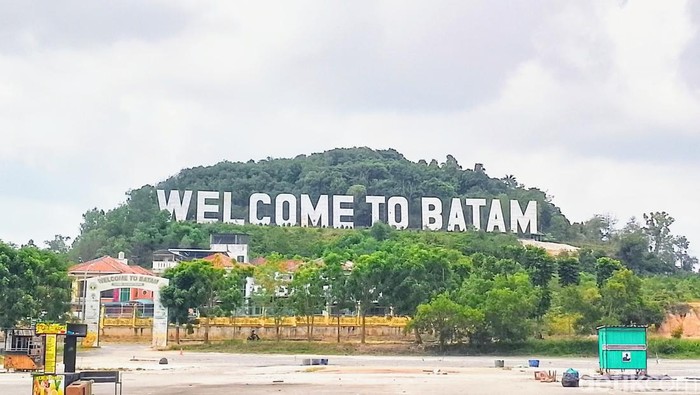Debunking the Batam Myth: Digitalization & Bonded Logistics Centers (PLB) as Smart Strategies to Cut Ship Component Import–Export Costs
1) Myths Still Alive in the Shipbuilding Industry
Among shipbuilding players, there’s a common belief:
“If you build a ship in Batam, you’re automatically exempt from import duties.”
This statement is not entirely true. For ships intended for domestic use, imported components are still subject to duties and taxes once they are released for use. In other words, location alone does not eliminate customs obligations.
It’s important to note that Batam has many advantages—its Free Trade Zone (FTZ) status, international logistics access, and a growing maritime ecosystem. However, shipyards in Surabaya, Jakarta, Makassar, or elsewhere can be just as competitive if they leverage the right customs facilities. One such facility is the Bonded Logistics Center (PLB), which has become increasingly effective thanks to digitalization.
2) Real Challenges for Shipyards: Import Permits, Detention/Demurrage, and Thin Margins
Why are customs strategies so crucial for shipyards? Let’s look at common problems:
-
Imported components dominate. Up to 70% of shipbuilding materials and components in Indonesia are imported. Nearly every project faces customs duties and taxes.
-
Import Permits (PI). Key components like engines, navigation systems, or propellers often require PI. Goods arrive at the port but cannot be released until the permit is issued. Meanwhile, detention (container holding fees) and demurrage (delayed unloading costs) continue to accumulate.
-
Thin profit margins. Industry reports show average pre-tax profit margins of only about 11%. Unexpected costs from documentation delays can immediately erode profits and disrupt project timelines.
Shipyards need solutions that are cost-efficient, compliant, and time-flexible.
3) PLB: A Smart, High-Compliance Strategy for Shipbuilding
The Bonded Logistics Center (PLB) provides breathing space for shipyards.
Key advantages:
-
Store now, pay later. Imported goods can enter PLB without immediate duties. Taxes are paid only when the goods leave for installation.
-
Safe while awaiting PI. Goods requiring PI can stay in PLB without detention/demurrage costs while waiting for permits.
-
Storage for up to 3 years. Components can be held in PLB for up to 3 years, giving flexibility for long-term projects.
-
Re-export option. If a component is not needed, it can be re-exported from PLB without duties.
-
Pay as you use. For staged installations, duties apply only to the goods actually withdrawn.
Thus, PLB not only reduces unexpected costs but also provides legal certainty because the entire mechanism is in line with customs regulations.
4) Ship Exports: More than One Facility Option
For ship exports, imported components used in production are not subject to duties. PLB is one facility to manage this, but it is not the only option.
Other facilities include:
-
KITE (Ease of Import for Export Purposes) – exemptions/refunds for imports used in export products.
-
Bonded Zones (Kawasan Berikat).
-
FTZ/SEZ (Special Economic Zones).
-
Cross-ministry facilities, such as support from the Ministry of Industry or Ministry of Transportation for trade administration, certification, and incentives.
In short: each scheme has its own advantages. Shipyards need to choose the most suitable for their project. Transcon can assist with legal & operational analysis to ensure compliance and efficiency.
5) Digitalization: Transparency & Efficiency
PLB becomes far more effective with modern digital systems.
Benefits include:
-
Real-time tracking of goods (ETA, PLB entry, stock, release for installation).
-
Integrated documents – PI, customs, and delivery orders processed online to reduce manual errors.
-
Transparent dashboards – giving both shipyards and shipowners access to the same data, boosting trust and speeding decision-making.
Digitalization makes shipyards appear more professional to investors and clients, while ensuring full compliance.
6) Mini Scenario: From Extra Costs to Smooth Projects
Imagine a Surabaya shipyard receives a ship engine from Europe. The engine requires PI.
-
Without PLB: The engine is stuck at the port, detention/demurrage costs pile up, installation is delayed.
-
With PLB + compliant documentation: The engine goes straight into PLB, safe until the PI is approved. Once the permit is issued, the engine is released, duties paid only on withdrawal, and installation continues on schedule.
Results:
-
Significant cost savings.
-
Project remains on time.
-
Process is 100% compliant.
7) Market Data: Momentum for Indonesia
Recent data highlights Indonesia’s shipbuilding opportunities:
-
Ship production fell from 250,000 GRT (2018) to 44,800 GRT (2023) but is projected to rise to 52,300 GRT (2028) (+16.8%).
-
The national shipbuilding industry is valued at USD 20 billion.
-
Asia-Pacific accounts for 70% of global ship orders, making supply chain efficiency key to competitiveness.
-
With thin margins (~11%), customs and warehousing efficiency directly impacts competitiveness.
The recovery momentum is here—only shipyards that are efficient, transparent, and compliant can seize it.
8) Batam & PLB: Both Valuable
This isn’t about choosing Batam or PLB.
-
Batam remains a major FTZ and international maritime hub.
-
PLB (along with KITE, Bonded Zones, SEZs) offers flexible solutions for shipyards across Indonesia.
Both are valuable. What matters most is using available facilities properly and compliantly to save costs and stay competitive.
9) Practical Checklist for Shipyards
-
Identify imported components subject to PI/trade rules.
-
Choose the most suitable customs facility (PLB, KITE, Bonded Zone, FTZ, SEZ).
-
Move goods into bonded facilities to avoid detention/demurrage.
-
Plan cash flow – pay duties only when goods exit.
-
Use digital dashboards for visibility of stocks and costs.
-
Keep re-export options open for unused components.
10) Conclusion & Call to Action
Bottom line: competitiveness in shipbuilding is not determined by location alone, but by how shipyards leverage customs facilities and digital systems in a compliant way.
PLB, KITE, and other facilities, if managed correctly, can make the difference: lower costs, legal certainty, on-time projects, and stronger competitiveness in the global market.
👉 Transcon Indonesia is ready to help shipyards choose and manage the best customs facilities, supported by real-time digital transparency. Contact us for further discussion and discover the most efficient strategy for your projects.
